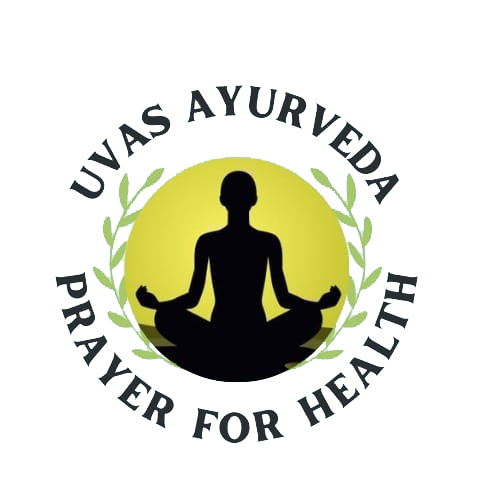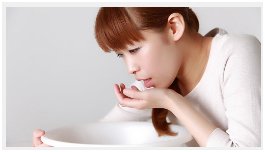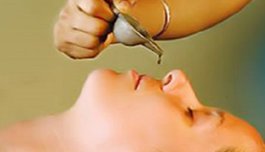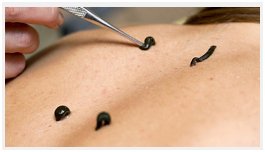Raktamokshana
Raktamokshana therapy is the blood cleansing and purification therapy. It is a therapeutic cleaning process given by Ayurveda. It is one of the essential parts of the Panchkarma healing treatments. It is the prime process of blood detoxification. It is derived from the two words, “Rakt”, which means blood and “Mokshana”, which means leave. Thus, Rakt mokshana means to let the blood out. The blood is expelled out from the body to reduce the quantity of toxic substances in the blood borne disorders. However, this therapy is not generally recommended to the patients. This is because; it involves a certain amount of risk factors in the whole cleansing and detoxification processes.
Raktamokshana therapy in ayurveda
Classifications Of Raktamokshana
RAKTAMOKSHANA IS GENERALLY OF THE FOLLOWING TWO TYPES:
When Kapha Dosha is increased aggressively causing a disease.
Kapha is associated with Pitta dosha and they together cause disease, but Kapha (aka Shleshma) is the dominant Dosha.
Vomiting should be allowed till the appearance- coming out of Pitta. This is appreciated by expulsion of bile or yellow sticky material, at the end. Coming out of Pitta indicates complete expulsion of Kapha Dosha.
Ayoga – inadequate bouts – Non – commencement of bouts, bouts coming on with hindrance or elimination of the medicine only- are the features of inadequate bouts; from it arise, excess of expectoration, itching, appearance of skin rashes, fever etc.
Diet regimen after Vamana treatment
1. SHASTRA VISRAVANA
Generally metallic instruments are used to carry out this process. It is further classified into two more categories: Pracchana, which means letting the blood pass through several incisions. Siravyadha, which is also known as the Vene puncture
2. ANUSHASTRA VISRAVANA
The metallic instruments are no considered for carrying out this procedure. It is further classified into three categories:
Jalaukavacharana, which means applying leeches. This is mainly done for the patients with Pitta dosha disorders.
Alabu, which means creating vacuum and extracting blood through the vacuum using a vegetable, which may be bottle guard or Alabu. This is mainly done for treating Kapha dosha diseases.
Shrungavacharana, which means applying the cow’s horns. This is mainly taken into account for treating the Vata disorders.
Of all the various classified types, Venepuncture of Siravyadha plays the most popular role in carrying out Raktmokshana effectively.
Complications To Be Treated With Raktamokshana Therapy
Individuals with aggravated unbalance between the blood (rakt) and Pitta dosha (fire body tumor) and high level of toxicity are recommended the Raktmokshana therapy. The important complications to be treated with the therapeutic therapy are skin disorders like allergic dermatitis, eczema, sciatica. Some other disorders, which must be treated with Raktmokshana therapy include abscess, edema, swelling and inflammations, uremia, dullness, pericarditis, tonsillitis. Also, this procedure helps in proper functioning of liver, heart and other essential organs of the body.
Procedure Of Carrying Out Raktamokshana
RAKTAMOKSHANA, THE SPECIALIZED DETOXIFICATION PROCESS COMPRISES THE FOLLOWING STEPS:
- Pre procedure or Purva Karma
- Main Procedure or Pradhana Karma
- Post procedure or Paschat Karma
- Purva Karma
It is carried out in regular periods. It is mainly done for diseases like gout, filariasis, psoriasis, glaucoma, oedema, erysipelas, liver and spleen disorders. Cotton swabs, gauze pieces are some of the proper instruments used to carry out this procedure.
Pradhana Karma
THE VARIOUS ASPECTS TO BE CONSIDERED DURING PRADHANA KARMA ARE THE FOLLOWING:
Prachhana – This method helps to provide relief from stress, tension and anxiety.
Siravyadha – According to the disease, the vein is selected. After oleation, sudation, the liquid gruel is injected. The patient either lies down or sits in erect posture.
Size of puncture – The size should be that of 1 brihi or half barley and in muscular areas, it should be the size of yava.
Jalaukavacharana – Tiny sized nicks are applied near the affected region. As soon as the blood oozes out, the leech is applied. When the leech sucks, the mouth takes the form of the horse’s hooves. Its neck is then covered using wet cotton. When enough blood is sucked, the leech leaves the area and moves down. In case, it does not leave on its own, turmeric powder is sprinkled on the leech.
Shringa Yantra – The horns are applied on the fleshy part of the body. The air gets sucked out, which creates a vacuum. The blood oozes out.
Paschat Karma
After the pradhana karma is done, dressing is done with a massage gently surrounding the wound. This is done with the help of the medicated oil.
Raktamokshana works as a preventive therapy and curative therapy as well. This therapy in Ayurveda is a partial or a complete treatment depending on the situation.
The Panchakarma encompasses five treatments that can prevent and heal a number of physical, mental and emotional disorders and illnesses.
It is a medicated emesis therapy used to decongest the chest, purify gastro-Intestinal tract and cleanes toxins…
Virechana or Virechana Karma is a purification therapy and one among the five sacred, healing therapies of …
Basti is one of the pancha karma therapies in Ayurveda. In ayurvedic classics, basti is mentioned as…
Nose is the gateway of head .Medicines administered by this route pervades the head and destroys the diseases…
Raktamokshana therapy is the blood cleansing and purification therapy. It is a therapeutic cleaning process given…






